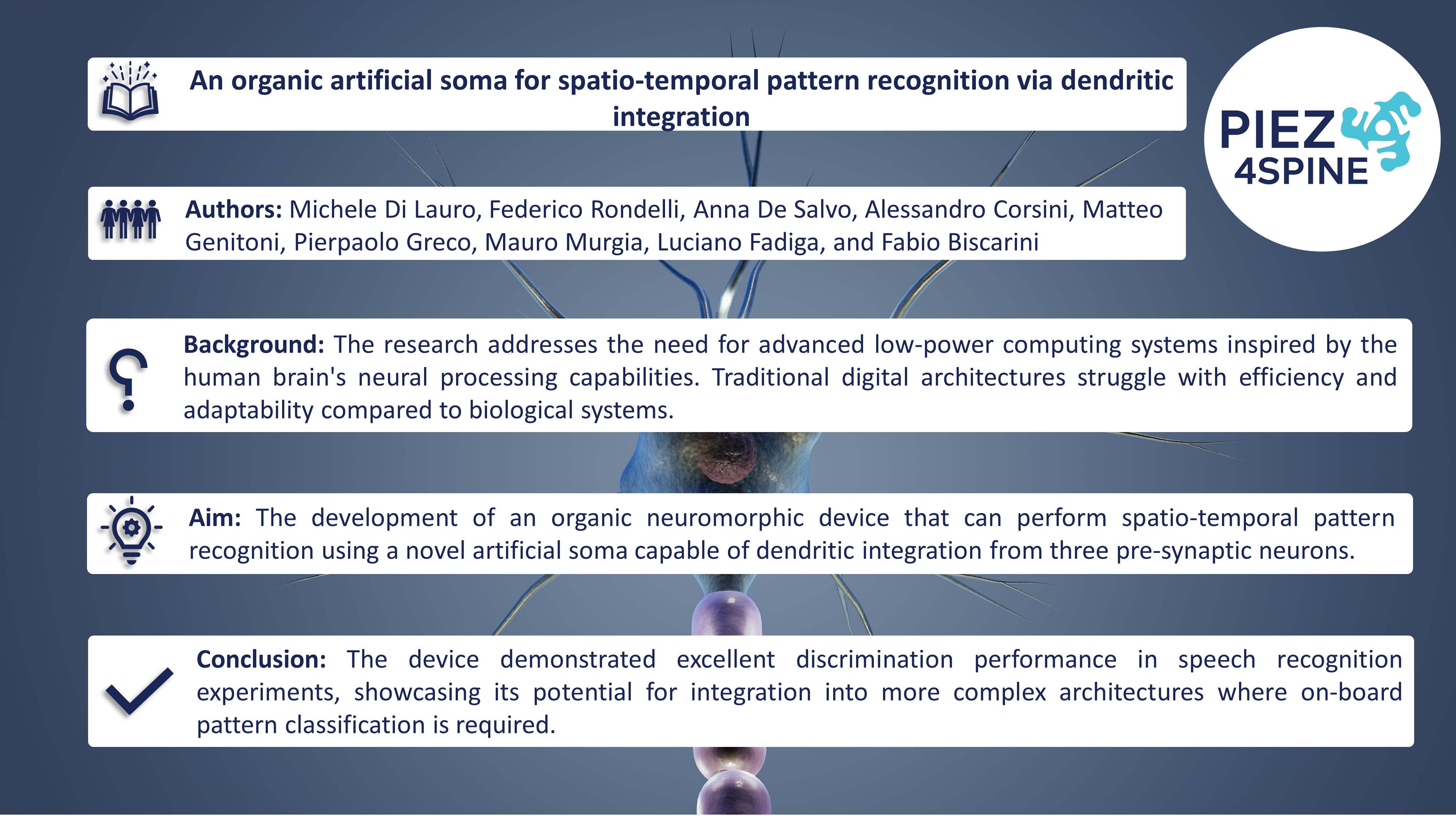Innovative Research at IIT: Pioneering Organic Neuromorphic Devices
We are excited to share groundbreaking research from our partners at the Italian Institute of Technology (IIT), conducted as part of the Piezo4Spine project. This new study, titled “An organic artificial soma for spatio-temporal pattern recognition via dendritic integration,” recently published in Neuromorphic Computing and Engineering, brings us one step closer to revolutionizing computing with brain-inspired technologies.
Background: Mimicking the Brain’s Efficiency
The human brain is an incredibly efficient and adaptable computing system, capable of complex pattern recognition and decision-making processes with minimal power consumption. Traditional digital computing systems, while powerful, struggle to match this level of efficiency and flexibility. This has driven scientists to explore neuromorphic engineering, an emerging field that seeks to mimic the brain’s neural architecture to create advanced computing systems.
Aim: Developing a Neuromorphic Device
In this study, the team aimed to develop an organic neuromorphic device capable of performing spatio-temporal pattern recognition, a key function of the human brain. They focused on creating an artificial soma, the cell body of a neuron, that could integrate signals from multiple pre-synaptic neurons. This integration process is crucial for recognizing patterns over time and space, much like how our brain processes sensory information.
Key Innovation: Organic Artificial Soma
The researchers introduced a novel organic artificial soma that integrates inputs from three pre-synaptic neurons. This device was designed to replicate the dendritic integration seen in biological neurons, where signals from various sources are combined and processed. By using organic materials, the team aimed to create a low-power, flexible, and scalable solution that can be easily integrated into more complex neuromorphic systems.
Conclusion: Promising Results in Speech Recognition
The newly developed device was tested in speech recognition experiments and demonstrated excellent discrimination performance. This success highlights the potential of organic neuromorphic devices in real-world applications, particularly in scenarios where on-board pattern classification is required, such as in portable electronic devices, robotics, and advanced prosthetics.
Looking Ahead: The Future of Neuromorphic Engineering
This research marks a significant step forward in the field of neuromorphic engineering. By developing organic devices that can emulate the brain’s processing capabilities, we move closer to creating more efficient and adaptable computing systems. The potential applications of this technology are vast, from enhancing artificial intelligence to improving the functionality of assistive devices.
We congratulate the authors Michele Di Lauro, Federico Rondelli, Anna De Salvo, Alessandro Corsini, Matteo Genitoni, Pierpaolo Greco, Mauro Murgia, Luciano Fadiga, and Fabio Biscarini from our partner IIT for their innovative work.



